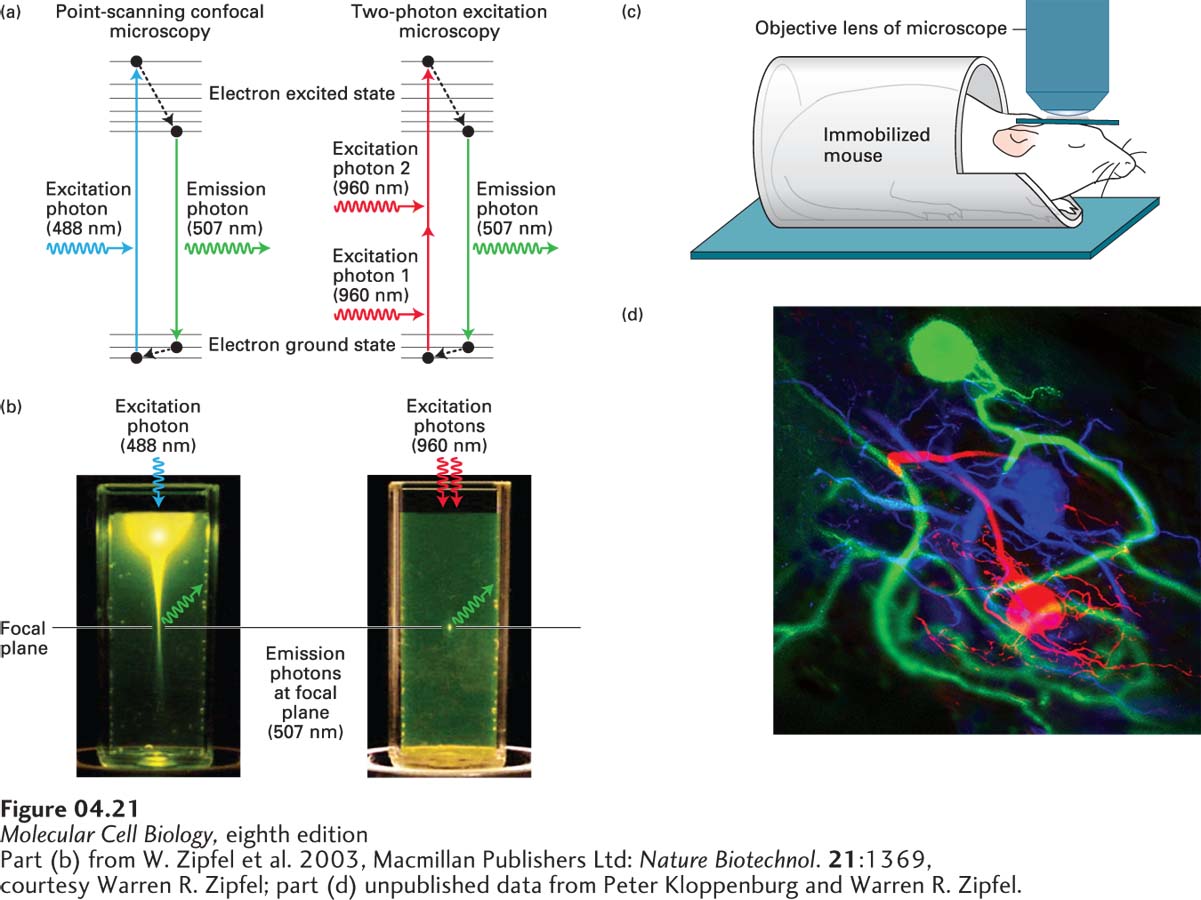
FIGURE 4- 21 Two- photon excitation microscopy restricts illumination to the focal plane to allow deep penetration for intravital imaging. (a) A diagram illustrating the different excitation methods used for conventional point- scanning confocal microscopy and for two- photon excitation microscopy. In the conventional system, absorption of a single photon of the appropriate wavelength (here at 488 nm, shown by the blue arrow) results in an electron jumping to the excited state. After undergoing vibrational relaxation (black dashed arrow), the electron falls back to the ground state with emission of one photon at a longer (lower- energy) wavelength, in this case 507 nm (green arrow). In two- photon excitation, when two photons of the appropriate wavelength (shown here at 960 nm, red arrows) arrive almost instantaneously, they can both be absorbed and induce the electron to jump to the excited state. As in the previous case, the electron undergoes some vibrational relaxation (black dashed arrow) and falls back to the ground state with the emission of a photon (507 nm). (b) A cuvette of fluorescent material is illuminated with 488- nm light (left), as in conventional confocal microscopy, or with intense 960- nm light, as in two- photon microscopy. Notice that the conventional system produces a bright cone of excitation outside the focal plane, whereas two- photon excitation illuminates just one spot in the focal plane. (c) Because two- photon microscopy does not excite fluorochromes outside the plane of focus, it can be used to observe cells up to 1 mm deep within a living animal (“intravital imaging”). To image a living animal, it has to be immobilized on the microscope stage and access given for the objective lens to come close to the region being imaged. (d) An example of intravital imaging in which labeled neurons in a lobster were imaged.
[Part (b) from W. Zipfel et al. 2003, Macmillan Publishers Ltd: Nature Biotechnol. 21:1369, courtesy Warren R. Zipfel; part (d) unpublished data from Peter Kloppenburg and Warren R. Zipfel.]
[Leave] [Close]